Pot Filler Leak - how to determine point of failure
I’m hoping Joseph Corlett sees this…
I had a pot filler perform a blast leak last night inside my wall. The plumber/contractor are insisting the point of failure is the pot filler as it secures via 2 o-rings and a single hex nut. “It’s because you bought the kind with only ONE hex nut and it’s not the kind that has 2-3 hex nuts to stabilize it”. (This is either a Kingston or Newport Brass filler, so not a random Amazon purchase) This doesn’t make sense to me because there was extremely minimal water entrance into the kitchen - 1 paper towel’s worth of clean up. The unfinished basement and pool storage area that run directly under the pot filler wall both got excessive amounts of water.
I suspect it was a less that stellar install of the 4” brass stub to the vertical pipe going up the inside of the wall. But would that be an issue now considering the pot filler was installed ~September?
When they removed the pot filler and the 4” stub and replaced the stub with a piece they could cap, the water was ok to turn back on.
Who is likely correct? Is there anything I can do to verify the responsibility of the problem?
Also, when I was running around to turn off the water, I discovered neither of the shut off’s at the house turned off the water to this line. I had to open the meter at the street and shut it off there! My water line for the freezer is also part of this setup. This is clearly not done to code since these lines aren’t a tub or shower yet lack their own shut offs. These were new lines as part of the kitchen remodel - so who should be paying the plumber to install shut offs - me or the contractor? Gotta love Covid-era city inspections.
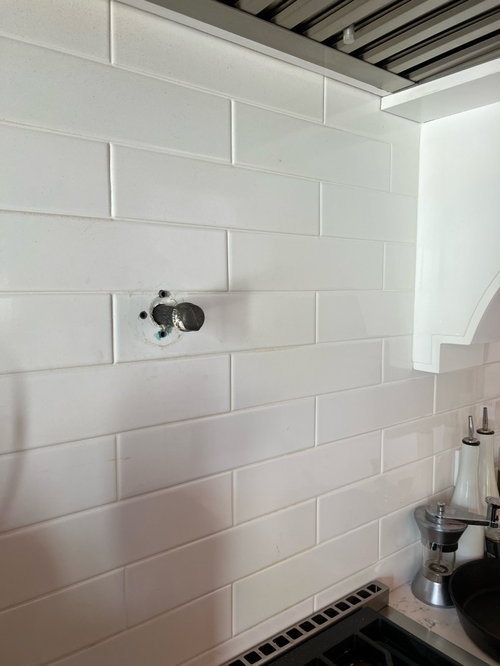
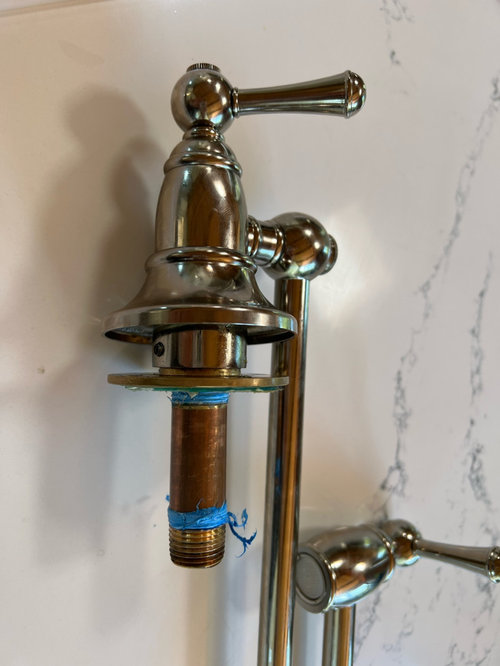
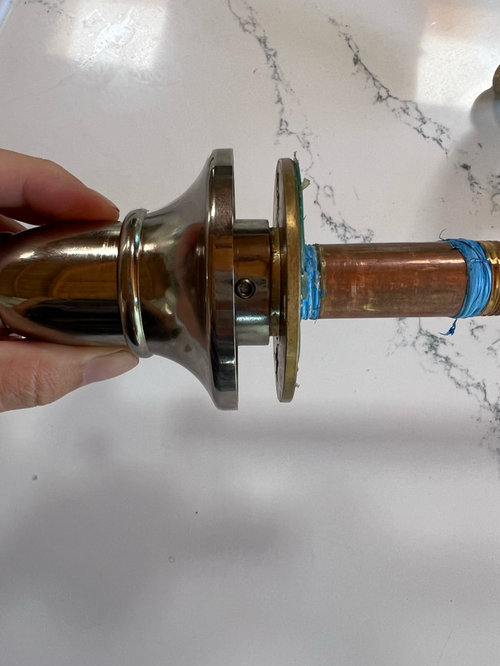
Comments (53)
Daniell e
Original Author2 years agoI definitely didn’t misunderstand the contractor as I pushed back and wasn’t corrected - he doubled down on the assessment that it was the faucet’s fault (always easier for the “other guy” to be the performer of crap work). He actually said “buy something else that’s high quality and tell them you want 3 hex screws so this doesn’t happen again”.
I bought the faucet from a kitchen and bath retailer in TX who actually had it in stock at one of their locations. The name escapes me at the moment, but it was a large company - not a random hole in the wall.
The way the faucet attaches to that brass plate seems to not really screw on - both the faucet and the plate have triangular teeth inside - so you essentially push the faucet onto the plate and over the two o-rings at the proper angle and then tighten the hex screw. I had not noticed the faucet having play previously, but after the leak, it did seem to have some jiggle-factor. I don’t know if that was due to unscrewing the escutcheon or due to the failure.
The sticking point for me is that there was nearly NO water in my kitchen. The contractor explained that the escutcheon would have redirected the leak back into the hole in the wall, sparing the kitchen. This sounds like nonsense to me, but I’m not always right in life, so I’d like to be armed with more than my uneducated opinion.
What’s your opinion on installing this new water line without a shut off? I obviously paid for plumbing as part of the remodel.
Jeffrey R. Grenz, General Contractor
2 years agoFound one of each brand online and reviewed installation instructions. Newport Brass threads on, is about 3x the price of Kingston Brass, a "push on" attachment. They rely on drywall anchors to keep the plate on the wall (instead of screwing into wood blocking). Excessive water pressure may have been more than the "teeth" or the anchors could handle over time. The leverage a faucet like this can put on the connection point is huge if mishandled. Lots of possibilities.
The names are easily & likely intentionally confused due to "brass" being used in each name, but according to the reviews below, only one meets US warranty standards. One is listed as a "marketeer" while the other an "assembler" which says more about the differences.
http://www.starcraftcustombuilders.com/sources.faucets.Kingston.Brass.htm
http://www.starcraftcustombuilders.com/sources.faucets.Newport.Brass.htm
Well known retailers online & physical know they have effectively zero liability if they sell you a faucet, so their purchasing standards are dropping to meet competition.Related Professionals
Bremerton General Contractors · Millville General Contractors · Palatine General Contractors · Westminster General Contractors · Clearfield Home Builders · Katy Home Builders · Worcester Plumbers · Bremerton Kitchen & Bathroom Remodelers · Independence Kitchen & Bathroom Remodelers · Pinellas Park Kitchen & Bathroom Remodelers · West Palm Beach Kitchen & Bathroom Remodelers · Freehold Kitchen & Bathroom Designers · Red Bank Kitchen & Bathroom Remodelers · Edwards Tile and Stone Contractors · La Canada Flintridge Tile and Stone ContractorsJake The Wonderdog
2 years agolast modified: 2 years agoThe leak happened in the part(s) that were removed and replaced with a capped nipple. We know that because it doesn't leak now.
Unless there's a hole in that brass nipple, the only place that much water (blast leak) could come from is the pot filler connection - and water was redirected back into the wall.
I'm not sure how they missed that there was no service shutoff for the pot filler - but that's obviously a problem.
Look, I'm sorry the leak happened and that it did damage. But I think that you are trying to find someone to blame. Install a service shut off for your pot filler and replace the filler with a better design - or better yet, cap off the line and replace that tile. This pot filler is getting super expensive for not much utility.
***** Note: I've revised my thinking on this - see below******Daniell e
Original Author2 years ago@Jake I appreciate the insight. This is a brand new complete remodel finished in the fall, so that’s why I want to know where the responsibility lies - did I buy a fancy faucet that’s junk or did the contractor’s sub do a bum job on seating the stub? If I end up with mold or other issues, am I blaming myself and my kitchen jewelry or am I calling the contractor? That’s why I’d like to know what the likely scenario is here. :)
Regarding the shut off, is it reasonable to expect the sub to come back and install that gratis since running this new plumbing was part of the remodel? To me, it seems this was a huge oversight for both code requirements and functionality in an OH #{>~€€!! moment. But the contractor told the sub in front of me “You work out a fair price with her to come back and install those shut offs so she doesn’t have to worry”. Considering it’s against code to have run the line this way, shouldn’t it be “Come back and install the shut offs and don’t charge her”?
ci_lantro
2 years agoI bought the faucet from a kitchen and bath retailer in TX who actually had it in stock at one of their locations. The name escapes me at the moment, but it was a large company...
Where you bought it doesn't matter at this point. What we need to know is the brand and, ideally, the model # or name of the faucet. So we can look up the installation instructions.
The way the faucet attaches to that brass plate seems to not really screw on - both the faucet and the plate have triangular teeth inside - so you essentially push the faucet onto the plate and over the two o-rings at the proper angle and then tighten the hex screw.
I 100% agree with Jake. And if the faucet in fact installs in the method you described. it was an accident waiting to happen.
Jake The Wonderdog
2 years agolast modified: 2 years agoThe contractor does not have liability for the leak. There's nothing in their design, materials or workmanship that caused that leak. The issue is with the design of the pot filler. I'm really sorry. There might be an argument that the contractor didn't install the arm on the base securely, but I think that's a stretch.
The shutoffs are needed not only for Oh Sht! moments, but also simply for service and repair. The lack of shutoffs is an omission that is a warranty issue. It's not your job to bargain with the plumber. You didn't hire the plumber, the GC did. The plumber doesn't work for you, he works for the GC. The GC doesn't get to wash his hands of it by leaving it to you two to work out.Make it clear to the GC that you are holding THEM responsible for getting the plumber out there to install the shutoffs and you don't intend to pay for it. He may push back.
What does your contract say about warranty term and how warranty issues are resolved?
bry911
2 years agolast modified: 2 years agoFirst , your homeowner's insurance should cover this, deciding whether or not to file a claim is up to you.
However, you are probably going to struggle to prove the plumber is at fault. You could certainly argue the plumber had a duty to warn you of this possibility when he installed it, and he really should have, but that seems like a dollar chasing a dime to me.
As for the shutoff. While not having a shutoff is annoying, how exactly, and by what amount, did it increase the damage from this failure?
Jake The Wonderdog
2 years agolast modified: 2 years agoFrom the homeowner's perspective, they paid a gazillion dollars to have a nice kitchen with high-end finishes installed. They want someone to take ownership-- and probably paid someone to take ownership-- of the entire process. Having the basement flooded by a kitchen plumbing issue 6 months later would make me angry also - even though I believe it was a defective pot filler design.
The shut off issue didn't make the flood worse - but nonetheless is an omission that was discovered during this issue. The shutoffs need to be installed - regardless of who is or is not liable for the leak.
bry911
2 years agolast modified: 2 years ago@Jake The Wonderdog - I am not sure what point you are trying to make to me with your response. What the OP wants is not really relevant to the OP's options.
I completely believe the plumber is at fault. The plumber has an affirmative duty to warn customers of problems during the installation. If the plumber and contractor can claim, “It’s because you bought the kind with only ONE hex nut and it’s not the kind that has 2-3 hex nuts to stabilize it," then why didn't they say that before they installed it? The OP is going to have a better chance to recover based on that.
Furthermore, as to the omission. You have the right to be put into the position you would have been in without the omission. That means you have the right to pay the plumber the same amount to install it today as they could have charged you when they originally should have, which is not free...
---
The problem the OP faces has little to do with fault for the leak or the omitted shutoff. It has to do with the likelihood of recovery versus the cost/effort of recovery.
In my opinion the OP is going to struggle to get any meaningful satisfaction from the plumber or contractor without a lot more effort than it is worth. This is, of course, just my opinion, and the OP should certainly try to get some discount or satisfaction.
Jake The Wonderdog
2 years agolast modified: 2 years agoI see this differently - perhaps I misunderstood.
The homeowner supplied the pot filler. The pot filler leaked. After the leak, the plumber noted it was a bad design. That doesn't mean that they knew beforehand that there was a high probability of a leak or they had any duty beyond installing the fixture according to manufacturers instructions. I don't believe the plumber is liable - based on information presented. It was not their design, materials or workmanship that was defective.
The shut off, on the other hand, is the plumber's design - or rather an omission of their design. The homeowner paid the GC to have a job done to code and with good workmanship. To my knowledge - the homeowner was not contracting directly with the plumber on materials and labor basis. The homeowner paid for a shut off as part of the complete remodel - to code. They didn't get it.
I agree with you though - if the GC balks - it's going to be tough to get them to install the shut off. It's not worth pursuing it other than to give them a bad reference.
This is a good example of contractors needing to be clear up front about warranty for homeowner supplied fixtures, finishes, etc.
If I'm the GC - I'm making a markup on fixtures, finishes, etc. - in part to cover warranty issues. I'm also steering the client to products that have a quality reputation, a dealer network that will help if there are problems, etc. I don't want to be responsible for the follow-on issues that result from homeowner supplied stuff.
Daniell e
Original Author2 years agoI’m not looking to make a homeowner’s claim etc. I do want to know if this is the pot filler (aka I need to buy another) OR the plumber didn’t attach the brass stem properly into the vertical waterline (aka I should get a new stem out of an abundance of caution AND make double sure it’s tightened properly). I’d also like to know if it’s reasonable that the sub installs the shut offs to code without sending me a bill. This will be a shocker, but I have a lot of experiences of being told bs from various tradesmen to shirk responsibility, and it is hard as a younger woman to push back if I don’t know quite plainly what the objectively right answer is. (Carpentry is my wheelhouse, plumbing is not) I know the contractor should be on my side with subs, but here we are with him suggesting the guy is coming back and charging me for that favor only for my peace of mind. I’ve had go rounds with him previously over the course of the project, but it was on items I had real knowledge of. I really do appreciate the help here.
First photo shows the brass stub that was previously installed to the water line elbow inside the wall. It’s still attached to the anchor plate from the faucet because I can’t Heman it apart. It’s a simple 4” brass stub from Home Depot. The round plate came with the faucet and was previously screwed into the tile via anchors. The second photo shows those brass “teeth” I was speaking of that keep the faucet from rotating or sagging once installed, the 2 o-rings, and the hex nut is on the far left, which is the bottom of the faucet when installed.
What I still can’t understand is how a failure between the faucet and the anchor plate, put in my kitchen, could somehow contain all the leak and zoom it back into the wall so neatly.
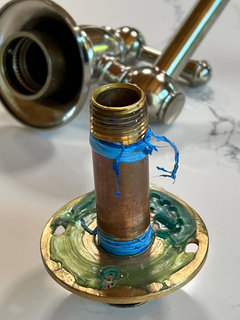
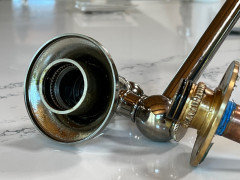
ramona1976
2 years agoWithout reassembling it and connecting it to a source of water to test we really don't know exactly where the failure occured. I agree that it is strange that the leak occured inside the wall.
I don't know what builing code you are under, but to my knowledge a shutoff, while highly recommended, is not required by code for a pot filler.bry911
2 years agolast modified: 2 years ago@Daniell e - Water can do crazy things and it is pretty difficult to prove fault. I had a leak in a refrigerator line that caused enough damage to flooring 15' away that it damaged the cabinets and cracked a countertop.
The refrigerator repairman couldn't find the leak because it was a small hole that was causing the water to shoot into an area that the repairman didn't think to look for a leak. All of our kitchen cabinets had to be replaced and it wasn't worth our trouble to go after the refrigerator repairman even without having to pay attorney fees.
So, feel free to angle for a discount, but I wouldn't put too much effort in trying to hold the plumber responsible. In my opinion, the juice isn't worth the squeeze.
----
I’d also like to know if it’s reasonable that the sub installs the shut offs to code without sending me a bill.
You don't have a right to free stuff. You have a right to pay the same now that you would have paid then. If the shutoff was not included in the bid, you have the right to be charged what you would have paid were it added to the bid at the time it should have been.
I suspect you can get the plumber to add a shutoff for the cost of the shutoff if you push. He may do it free because it is an immaterial amount.
Jake The Wonderdog
2 years agolast modified: 2 years agoOk, looking at these new photos - along with the original photos - I don't get it either.
There is no "hole" in the brass nipple. The only way I see the nipple leaking significant amounts of water is if it were just started and not threaded in tight. It looks like from the threads and the tape that it was threaded securely in the fitting in the wall.
That said, the brass mounting plate completely covers the outside of the hole in the tile. Water leaking from the O-ring area would not make it behind the wall without 99.99% showing up in the kitchen. Instead 99.99% was inside the wall.
I'm going to suggest something else - that there's a cracked drop- eared elbow inside the wall. This is clearly just a theory because right now nothing else makes sense.
Here's how to check: Turn off your water. Remove the temporary nipple that's in the wall now. Shine a light in the hole and and examine the fitting in the wall. Look for cracks along the surface. (See photo). Run the tip of a screwdriver over that face and see if it catches on anything.
Here's how this happens: Plumbing threads are tapered. They get larger as you screw them in - that's how they seal. If you tighten a pipe too much, they can crack the fitting they are going into. It doesn't happen with galvanized iron usually, but you could see it with a lead-free brass elbow that is more brittle. I could also see the crack happen some time after the original install.
You can even get a $20 endoscope on Amazon that connects to your laptop to get a better view inside the wall if you need to.
The more I think about this, the more I think this is what's going on.
BTW: That nonsense about "not being entitled to free stuff" is BS. You paid for, and should expect, plumbing done to code and good workmanship.
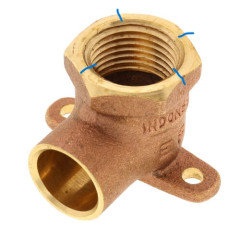
Joseph Corlett, LLC
2 years agoWhen you install a fixture, you put your blessing on it. You can tell the lady "No." or you can eat it when it blows. My customers are paying me to save them from themselves and I do it on occasion.
A builder interested in a good relationship will eat the cost of the shutoff and/or have enough leverage with the plumber to eat half of it.ci_lantro
2 years agoI'm going to suggest something else - that there's a cracked drop- eared elbow inside the wall. This is clearly just a theory because right now nothing else makes sense.
Except that the wall & tile are still intact so I don't see how that elbow could have been replaced without access to the framing. There is a new nipple that has been capped off, no shut off installed yet and, presumably the water supply to the house has been turned on. Meaning that capped nipple is under pressure? And there is no leak?Which does not rule out the nipple being defective, though...
But there is a basement, no telling how level the floor is and we don't know how much inspection after the fact was done. Was the stove removed? Does the finish flooring extend under the stove? Is there a penetration in the floor for a gas line or electrical cable? There has to be a penetration for the water line at least so an avenue for water to leak under the wall plate and into the basement. And the escutcheon would have diverted a water leak originating outside the wall back towards the wall.
Daniell e
Original Author2 years ago@ci_lantro
The basement is an unfinished Los Angeles special: dirt floor only partially excavated (why????). The walls are open to the studs/ceiling is open to the joists, so I can see everything going on - gas/water/electrical/drains... The leaking has stopped and, given a bizarre heat wave with no humidity last week, even here at the beach we dried out. This is also an exterior wall against new smooth stucco, so I watched the wet mark disappear from the outside as well. I’ll continue to monitor the area, but I’m hopeful the flood is over and no mold will commence. I have a 60” range with finished wood floor underneath and that’s where I mopped up one of those small rectangles of paper towel’s worth of water after we shut off the water at the street.Jake The Wonderdog
2 years agolast modified: 2 years agoDid you check the elbow? I'm certain that's what's going on.
Regarding the question from @ci_lantroi: No, the elbow wasn't replaced. It's still cracked. The new nipple was tightened up past the point of it leaking... although I wouldn't trust it for obvious reasons.ci_lantro
2 years agoRegarding the question from @ci_lantroi: No, the elbow wasn't replaced. It's still cracked. The new nipple was tightened up past the point of it leaking... although I wouldn't trust it for obvious reasons.
I'm going to suggest something else - that there's a cracked drop- eared elbow inside the wall. This is clearly just a theory because right now nothing else makes sense.
When did the 'cracked elbow theory' become fact?Daniell e
Original Author2 years agoIt definitely has not been proven. I’m awaiting one of those little cameras to have a peek.
I’m also awaiting attachment info on a Watermark fixture. It seems well regarded in the above-linked site and isn’t a purveyor of very contemporary design.
The Kitchen Place
2 years agolast modified: 2 years agoI don't want to be negative here, but I am sooooo glad the love affair with pot fillers has tapered off in kitchen trends. They are pretty....and maybe slightly convenient. But let's be honest, not really needed in most households. They're a leak waiting to happen. TBH, This post makes me want to refuse any future requests for them.
Jeffrey R. Grenz, General Contractor
2 years agoForget the camera, shut off the water, look and be done with this. If the main doesn't do it, fix that also.
Beware of unvetted fixtures. Guaranteed replacement is not enough. When the vendor tells you to toss it and wait for the replacement, its often not worth buying.Jake The Wonderdog
2 years ago@Jeffrey R. Grenz, General Contractor
even without the camera, you can detect this with a screwdriver on the face of the female fitting. It will catch on the crack - even if you can't see what you are doing. You should be able to see it with a flashlight while looking in the hole also.
ci_lantro
2 years agoPot fillers never made sense to me. I like to let the water run a bit before I fill my glass with drinking water & that is from a main kitchen faucet where the lines get flushed multiple times a day. With a pot filler, I would want to flush the old standing water out. Which would mean a trip to the sink to dump the old water. Might as well fill it up at the sink.
One of the main uses for a pot filler would be water for cooking pasta. But you don't really need gallons of water to do that. I don't use a large volume of water for pasta.
Here's how to cook one pound of dried pasta in 2 quarts of water:
https://www.thespruceeats.com/cook-pasta-with-less-water-995917
I bring the water to a good boil; let it boil for about 30 seconds. Cover the pot & shut off the heat. Let sit for 6-8 minutes. Drain.
The Kitchen Place
2 years agoMy husband REALLY REALLY wanted a pot filler when we remodeled in 2012. I put my foot down! lol. He still thinks they're cool. But our range is literally like...3ft away from our kitchen sink. What the heck!?!?!?
Daniell e
Original Author2 years agoI am “Italian by marriage”; the pasta cooking is a serious business in our house. I also put in a 14’ island to seat all our kids at AND provide prep surface - also works great for hanging fresh pasta and my marathon pizzelle operation over the holidays. But I digress. The pot filler is mostly kitchen jewelry to interrupt the huge expanse of subway tile. I’ve been debating keeping the [eventual] new valve off, but I really can’t have it permanently disconnected in the event I ever sell.
ci_lantro
2 years agoThe leak, the kids, the wood floor. All good reasons to take the pot filler water line out of service back to where it branches off from supply line.
Daniell e
Original Author2 years agoCan the experts take a peek at this install sheet and see if this looks to be a more trustworthy assembly system? To me, something with two areas for anchor screws seems like belt and suspenders, but I defer to your expertise if it in fact makes a difference in life.
http://waterstonefaucetsintl.com/install-guides/Waterstone-Wall-Potfiller-installation.pdf
bry911
2 years agolast modified: 2 years agoNot really an expert on potfillers, but why not a screw on?
Daniell e
Original Author2 years agoNone of them simply screw on. They all have a mounting plate, which screws onto the water line and anchors to the backsplash. Then the faucet pushes on, a set screw or 3 get tightened, and a decorative escutcheon screws on to cover the set screws. I assume this is because the faucet needs to be set vertically and can’t just be at the mercy of what position “tight” ends up being.
bry911
2 years agolast modified: 2 years agoNone of them simply screw on. They all have a mounting plate, which screws onto the water line and anchors to the backsplash.
The Delta I linked screws on as do the majority of pot fillers. They all have a mounting plate but but that plate is mounted to the wall to keep the faucet in the correct position (to keep the weight of the faucet from unscrewing it). All faucets are going to have a turn or two after "tight."
Push to fit are apparently more popular than I thought, but most screw on.Daniell e
Original Author2 years agoForgive me for being dense, but I’ve been looking at Brizo, Waterstone, Rohl, the Kohler Artifacts line, etc… I haven’t found anything that threads on - they’re all 3 pieces: faucet, escutcheon, mounting plate. Not a single one like the first of the 3 videos in your most recent post.
bry911
2 years ago
Daniell e - I’ve been looking at Brizo, Waterstone, Rohl, the Kohler Artifacts line, etc… I haven’t found anything that threads on - they’re all 3 pieces: faucet, escutcheon, mounting plate.
I think you are misunderstanding as both the Brizo and Kohler Artifacts line are threaded faucets. All wall mounted pot fillers have a mounting plate, an escutcheon, and a faucet. That doesn't have anything to do with how they attach to the water supply. The mounting plate is necessary because the weight of the arm will rotate the faucet out of the horizontal position. That happens in both threaded faucets and push fit faucets.
When functioning properly both push fit and threaded are fine. However, when there is a failure threaded faucets cause a drip leak and push fit faucets cause an explosive leak. Furthermore, when a threaded faucet fails you are going to see it before it does any significant damage as you faucet arm will have fallen noticeably.
Here is the Brizo instructions: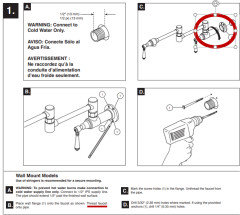
Here is the Kohler Artifacts line: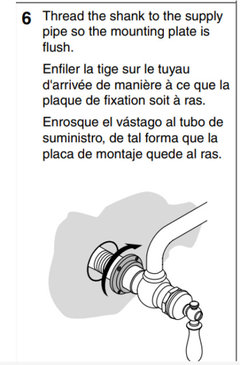
ci_lantro
2 years agoWhen I looked at the installation instructions for both Kingston Brass & Newport Brass potfillers, both threaded onto pipe nipples. Neither were push fit/ set screw installs. You said that your potfiller was either a Newport Brass or Kingston Brass but what I found for instructions with those brands did not match how the failed filler was installed.
And that discrepancy is why I asked for clarification of the brand, model # or model name. You never responded to that ask.
bry911
2 years ago@ Daniell e - I think it is important to understand that your contractor is lying to you. What you want to do with that is up to you.
The leak, as you described it, was not caused by the set screw coming off. The physics doesn't work. The mounting plate completely covers the hole in the wall that the pipe protrudes from and appears to be threaded onto the pipe. There is no hole in the mounting plate to get the water from the push fit connection to the hole in the wall without 99% of it winding up in your kitchen. It just didn't happen.
So while you should carefully consider which new faucet to pick, don't believe the line of B.S. you are being fed. Have you considered taking the faucet to the plumbing supplier you bought it from and talking to them? They will probably give you a bit of help with the contractor if you need it.Daniell e
Original Author2 years agoTBD. We had 30 cousins here for Easter, so I haven’t tackled shutting down the water and taking a peek yet. But upon looking at the filler again, I can’t imagine under any circumstance that the water failing at the filler could ever be redirected back in the wall. It would have to happen by magic where it flew around the anchor plate and sucked back into the wall via some magic, kitchen-saving vortex vacuum. I strongly suspect I will find a crack.
bry911
2 years agoI personally have two kitchen-destroying vortex vacuums... What's worse is that I have to clothe them too.
loobab
2 years agolast modified: 2 years agoCooking and travel shows are amongst my favorites, and when they feature nonnas cooking in Italy, they don't have pot fillers in their kitchen, yet they turn out marvelous pasta and other delicacies.
While I like the idea of filling the pot right there, you still have to carry the heavy pot to pour out the hot water, which is more hazardous.
I like Joe Corlett's response above.
That's why he has his fees and doesn't go for vetting interviews, tc.
Because his professional reputation and integrity most probably recede him in his area.
Jeffrey R. Grenz, General Contractor
2 years agoIts a press on pot filler. Your photo shows the teeth after someone was able to pull it back apart?
Outright failure or may have been bumped or "misused" when you weren't in the room.
Pots full of water and "non owners" can put a lot of leverage on that toothed attachement.
We've had a few calls from clients over the years and we've learned double faucets in the kitchen are also great for water fights, double loading water balloons, spraying the back of a sibling while they're doing dishes, etc.
Also one that called about the tub filler leaking (over powered the set screw to make it twist out of the way)Mrs Pete
last yearIgnore XXXX. Some people give out toothbrushes on Halloween.
Best comment I've seen today!
I don't want to be negative here, but I am sooooo glad the love affair with pot fillers has tapered off in kitchen trends. They are pretty....and maybe slightly convenient. But let's be honest, not really needed in most households. They're a leak waiting to happen. TBH, This post makes me want to refuse any future requests for them.
Hey, be fair. I've been reading this board for ... a decade? And this is the first pot filler I've ever heard of failing.
People put in quite a few things that are "slightly convenient. If we were building just the basics we really NEED, not what we WANT, we'd all be buying spec houses in suburban neighborhoods.
The Kitchen Place
last yearThere are lots of ways to make a kitchen unique and not look builder grade or spec house-ish. Good design, to me, is wayyyyy at the top of the list. And pot fillers only cut your 'lugging huge heavy pot burden" in half....you still have to carry them to a sink to drain.
Here's an article about pros/cons. Another con is a leak could damage your range or cooktops electronics. To me, it doesn't make sense to put something in your kitchen that could potentially wreck havoc. If there were some kind of drip pan or drain....then that would be fine. But if room allows, you might as well have a prep sink sink nearby instead.
From my experience, people want them coz they look so cool! I hear it everyday. But 99% of my clients ultimately decide not to do them. Oddly though, I'm installing one for a client right now. lol. But in her case, I understand why she needs it...and I didn't poo-poo the idea to her.
And while we rarely hear of PF leaks here on this forum....they do happen. Otherwise, they wouldn't be listed as a con.
Click link below for article.Jake The Wonderdog
last yearHi all:
I think the OP has heard enough of the unsolicited piling on regarding reasons not to install a pot filler - mine included.
I was just hoping to hear a follow-up on the actual source of the leak.
Mrs Pete
last yearlast modified: last yearThere are lots of ways to make a kitchen unique and not look builder grade or spec house-ish. Good design, to me, is wayyyyy at the top of the list. And pot fillers only cut your 'lugging huge heavy pot burden" in half....you still have to carry them to a sink to drain.
Well, if you assume pot fillers are ONLY good for filling pots for pasta, you'd be right -- but if you're a Southerner and make iced tea every day, or if you're a from-scratch cook who adds a bit more water to soup or gravy on the fly, you'd know that water at the stove is useful in a variety of purposes, and not all of those purposes include "lugging" a heavy pot back to the sink.
Just wondering, why is it always a heavy pot? Am I the only person who ever cooks a single serving of Ramen noodles?
From my experience, people want them coz they look so cool!
Disagree. Function, not looks.
And while we rarely hear of PF leaks here on this forum....they do happen. Otherwise, they wouldn't be listed as a con.
I've seen them listed as a fear, but I've literally never heard of a leak until now. Makes me suspect "user error" on the part of the installer.
I was just hoping to hear a follow-up on the actual source of the leak.
I'd like to hear that too, but I don't think any of us have any real knowledge to add to the query.
The Kitchen Place
last yearhahaha...me too. I hardly ever get out my big pot unless I'm making mashed potatoes or steaming snowcrab legs.
I'm basing my thoughts on the "cool" statement as what I hear from my clients over the passed 40 years. Yah I'm getting up there. When I first started coming to Gardenweb/Houzz, I was in my late 20s or early 30s!
And thanks for info on Southern cooking (ie tea). I can see how that would be helpful. I'll keep that in mind when I get southern clients. I'm in Ohio...working with a Nashville woman now.
Jake, this is a forum. I am trying to be helpful to others that could be reading this now, trying to weigh the pros/cons.ci_lantro
last yearWhen I lived in the South, it was too hot to turn on the stove to make iced tea.
I always made a concentrate. Fill a quart jar about 2/3 full of water, add tea bags & nuke. Let cool, pour into pitcher & dilute with cold water & ice.
A lot of people also made sun tea out on the front or back porch.
Jake The Wonderdog
last yearlast modified: last yearCome on folks - if you want to re-flog the merits/demerits of pot fillers that's already a dead horse several times over, or recipe for sun tea, how about starting your own thread. I foolishly resurrected this thread because I asked a specific question of the OP that was directed to the original topic.
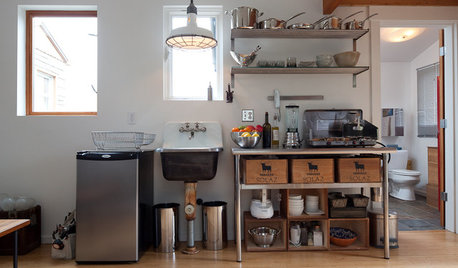

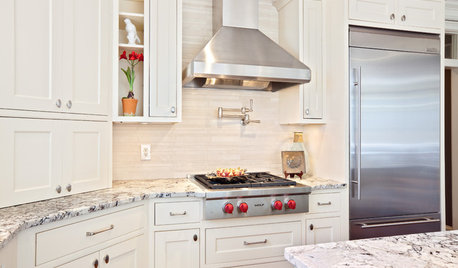

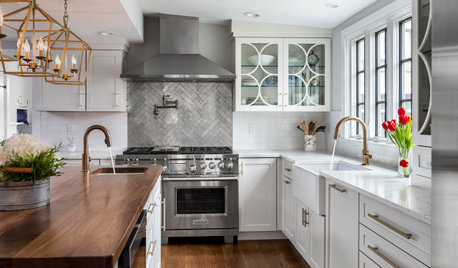
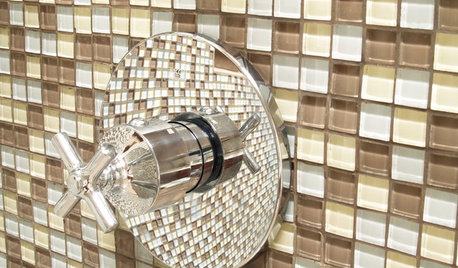

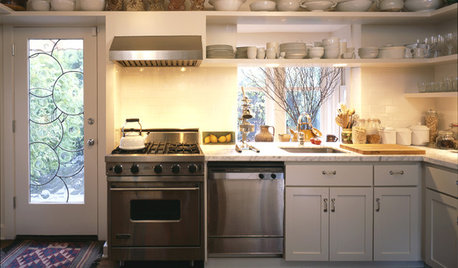
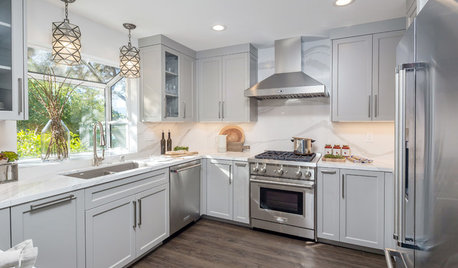








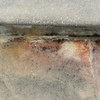
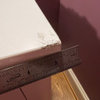
bry911